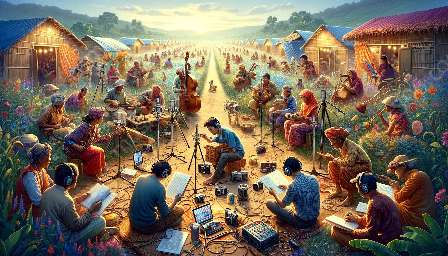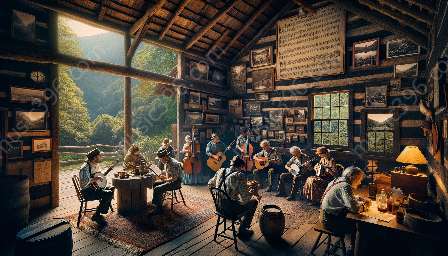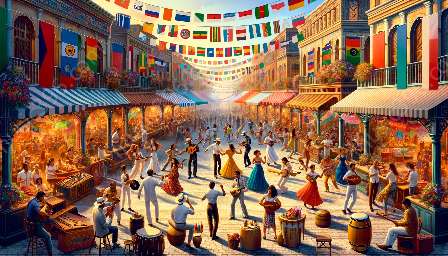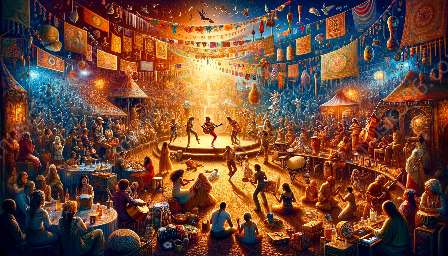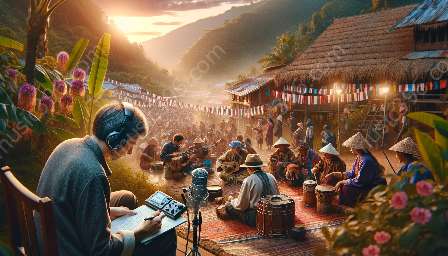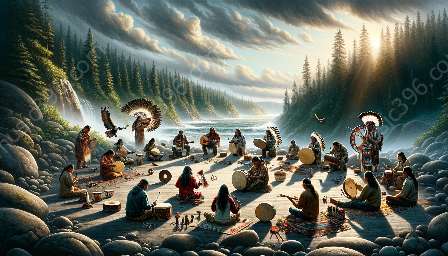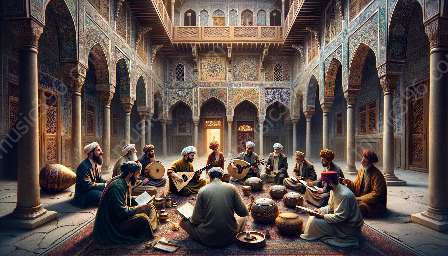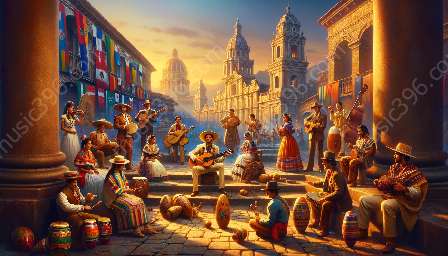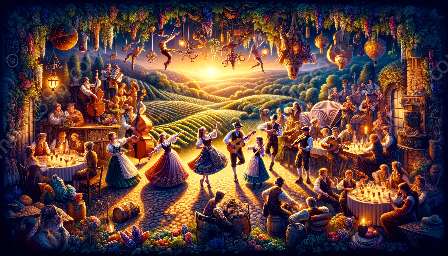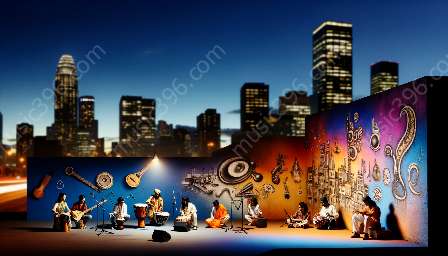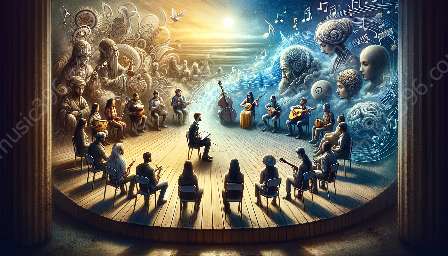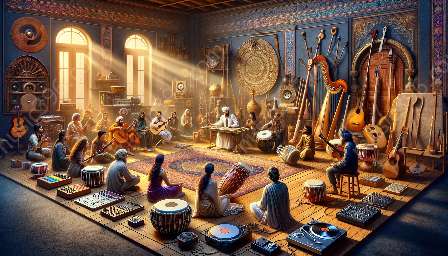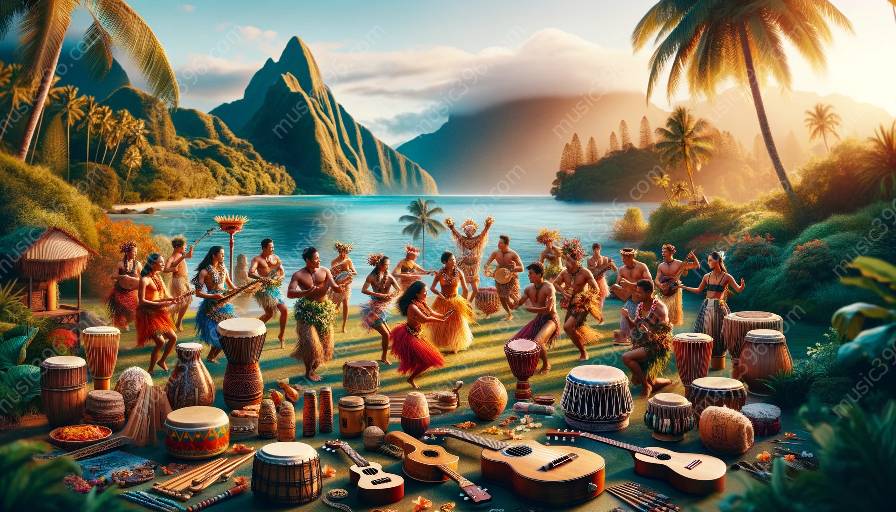The relationship between music and language in Pacific island cultures is a rich and complex one, deeply intertwined with the history, traditions, and social structures of these diverse societies. Music plays a crucial role in the cultural, spiritual, and linguistic expressions of these communities, reflecting their unique identities and worldviews. At the intersection of ethnomusicology and the music cultures of the Pacific, this topic offers a fascinating exploration of how music and language interact to shape the cultural fabric of these vibrant island societies.
Exploring the Musical Traditions
Pacific island cultures boast a diverse array of musical traditions, each with its own distinct characteristics and functions within the community. Traditional music, encompassing vocal chants, drumming, and rhythmic dances, has been passed down through generations as a means of preserving cultural heritage and transmitting knowledge and stories. A striking feature of these musical traditions is the seamless integration of language and music, often serving as vehicles for oral history and cultural preservation. Through the performance of traditional songs and dances, Pacific island communities uphold and celebrate their indigenous languages, fostering a deep sense of pride and belonging.
Language as a Musical Element
In the context of Pacific island music, language transcends its conventional role as a means of communication and evolves into a musical element in its own right. The tonalities, rhythms, and phonetic patterns of indigenous languages influence the melodic structures and vocal expressions of traditional music, blurring the boundaries between speech and song. Linguistic nuances are carefully woven into musical performances, amplifying the emotive power and cultural significance of the music. This synergy between language and music reflects the holistic nature of Pacific island cultures, where linguistic and musical expressions are intrinsically linked and inseparable.
Storytelling through Songs
One of the most profound connections between music and language in Pacific island cultures lies in the art of storytelling through songs. Traditional musical performances often serve as platforms for narrative storytelling, where myths, legends, and historical accounts are conveyed through lyrical compositions. In these storytelling songs, language becomes the vessel through which the collective wisdom and experiences of the community are immortalized, echoing the cadences of oral traditions. The poetic nature of the indigenous languages lends a lyrical beauty to the storytelling songs, infusing them with cultural significance and emotional resonance. Through this musical storytelling tradition, language acquires a melodic quality, captivating listeners and perpetuating the cultural narratives of the Pacific island societies.
Ethnomusicology and Cultural Studies
The field of ethnomusicology offers a comprehensive framework for understanding the intricate connections between music, language, and culture within Pacific island societies. Ethnomusicologists delve into the multifaceted dimensions of Pacific island music, examining the linguistic underpinnings of musical expressions and the cultural contexts that shape musical practices. Through immersive fieldwork and scholarly analysis, ethnomusicological research sheds light on the profound symbiosis between music and language, unraveling the ways in which these interconnected forms of expression shape social dynamics and identity formation.
Uncovering Cultural Signifiers
By studying the music cultures of the Pacific through an ethnomusicological lens, scholars unveil the invaluable cultural signifiers embedded within musical compositions and performances. Language emerges as a pivotal element in decoding the layers of meaning and symbolism within Pacific island music, providing insights into the historical narratives, belief systems, and societal values of these cultures. Ethnomusicological inquiries into the linguistic and musical dimensions of Pacific island music reveal the intricate web of cultural references and indigenous knowledge encoded within the melodies and lyrics.
Language Revitalization through Music
Furthermore, ethnomusicology plays a significant role in the revitalization and preservation of indigenous languages within Pacific island communities. As language loss continues to pose a threat to cultural heritage, ethnomusicologists collaborate with local musicians and community members to document and revitalize endangered languages through music. By recording traditional songs, documenting oral histories, and engaging in language revitalization initiatives, ethnomusicologists contribute to the preservation of linguistic diversity and cultural memory in the Pacific region. The synergy between ethnomusicology and language revitalization underscores the transformative power of music in safeguarding indigenous languages and fostering intergenerational transmission of cultural knowledge.
Contemporary Dynamics: Language, Music, and Identity
Amid the rapidly changing sociocultural landscapes of the Pacific islands, the connections between music, language, and identity undergo dynamic shifts and adaptations. Contemporary musical genres, influenced by global trends and cross-cultural exchanges, reflect a fusion of indigenous languages with modern musical styles, creating hybrid forms of expression that bridge traditional and contemporary influences. These evolving musical expressions serve as affirmations of cultural resilience and adaptability, showcasing the enduring role of language in shaping the identity narratives of Pacific island communities.
Cultural Hybridity and Syncretism
The interplay between music and language in contemporary Pacific island cultures embodies a process of cultural hybridity, where diverse linguistic and musical elements converge to create innovative forms of artistic expression. This cultural syncretism manifests in musical genres that integrate traditional language-based storytelling with contemporary musical arrangements, giving rise to new modes of cultural representation and creativity. Through these hybrid musical forms, Pacific island societies navigate the complexities of cultural globalization while reaffirming the significance of indigenous languages in shaping their artistic landscapes.
Multilingualism in Music
A notable aspect of the connections between music and language in the contemporary Pacific context is the emergence of multilingual musical compositions and performances. Artists and musicians draw from a spectrum of indigenous languages and dialects, weaving linguistic diversity into their music as a means of celebrating cultural pluralism and linguistic heritage. Multilingual songs serve as manifestations of linguistic inclusivity and cultural solidarity, reinforcing the multifaceted nature of Pacific island identities and fostering cross-cultural dialogues through music.
Future Directions: Preserving Linguistic and Musical Traditions
As Pacific island cultures continue to navigate the complexities of globalization and cultural transformation, the preservation of linguistic and musical traditions remains paramount. Ethnomusicologists and researchers collaborate with local communities to develop sustainable initiatives for safeguarding indigenous languages, documenting musical practices, and promoting intergenerational transmission of cultural knowledge. By recognizing the interconnectedness of music and language, these collaborative endeavors strive to uphold the rich heritage of Pacific island cultures and ensure the continuity of their linguistic and musical legacies.
Educational Outreach and Cultural Preservation
Efforts to preserve the connections between music and language in Pacific island cultures involve educational outreach programs that engage younger generations in learning traditional musical forms and indigenous languages. Through music education initiatives, children and youth are exposed to the wealth of cultural knowledge embedded within traditional songs and linguistic expressions, fostering a sense of cultural pride and connection to their heritage. Additionally, collaborative projects between ethnomusicologists, educators, and community leaders aim to integrate indigenous music and language curricula into formal education systems, perpetuating the transmission of cultural traditions across generations.
Empowering Local Voices
Central to the preservation of Pacific island linguistic and musical traditions is the amplification of local voices and community-driven initiatives. Ethnomusicologists work in tandem with indigenous musicians and cultural practitioners to empower local communities in reclaiming their linguistic and musical heritage. This collaborative approach honors the agency of Pacific island communities in steering the preservation and revitalization efforts, ensuring that their unique voices and cultural expressions remain at the forefront of the preservation initiatives.
The intricate connections between music and language in Pacific island cultures serve as a testament to the enduring resilience and cultural vitality of these vibrant communities. Through ethnomusicology and the music cultures of the Pacific, scholars and practitioners continue to unravel the multifaceted layers of linguistic and musical expressions, nurturing a profound understanding of the profound symbiosis between music, language, and culture. As the Pacific island societies navigate the complexities of contemporary dynamics, the preservation and celebration of their linguistic and musical traditions stand as cornerstones of cultural resilience and identity affirmation.


